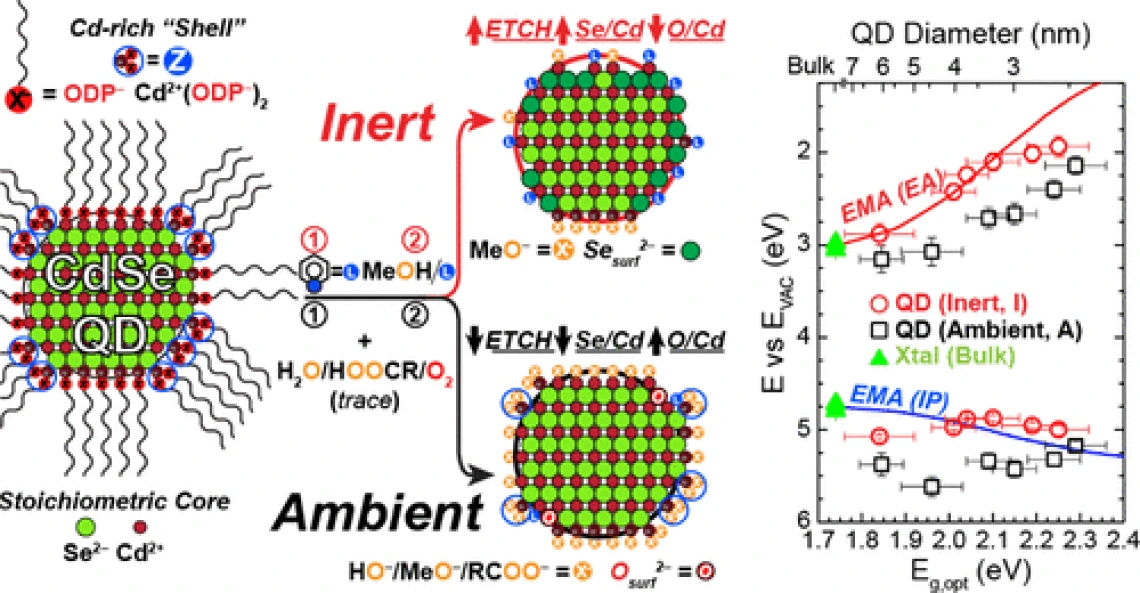Influence of the Processing Environment on the Surface Composition and Electronic Structure of Size-Quantized CdSe Quantum Dots

Abstract: We show here how differences in surface composition for monolayer (ML)-tethered pyridine (Py)-treated CdSe quantum dots (QDs) affect band edge energetics, as a function of QD diameter. We compare UV–vis spectroscopy of QD solutions and X-ray (XPS) and ultraviolet (UPS) photoelectron spectroscopy of QDs tethered to 1,6-hexanedithiol-modified Au surfaces. Differences in QD surface composition are brought about by differences in solvent composition during displacement of the native, X-type octadecylphosphonate (ODP–) ligands with Py and by differences in exposure to trace H2O and O2 during QD processing. Prior to surface tethering, exchange of the ODP– ligands with Py ligands under ambient (A) conditions leads to some surface passivation of the QD and no appreciable reduction in the spectroscopically estimated QD diameter. QDs processed in completely inert (I) environments (O2 and H2O below detection limits in the solvents, processing environments, and during analysis) undergo a small decrease in diameter during Py exchange and an increase in size dispersity. These simple differences in processing conditions lead to important differences in QD band edge energetics which will impact their use as photocatalysts and photovoltaic or light-emitting diode active layers. XPS characterization of Py-capped QD-tethered MLs, compared with freshly etched CdSe(0001) single-crystal surfaces, indicates that I QDs show a higher Se surface coverage relative to A QDs. For A QDs, we propose that trace H2O present during processing provides a proton source that facilitates ODP– desorption and replacement with charge-compensating HO– ligands, which inhibits subsequent changes in QD surface composition. UPS-derived size-quantized ionization potentials (IPs) and electron affinities (EAs) for I QDs, corrected for shifts in the local vacuum level, closely track the energetic shifts predicted by the effective mass approximation (EMA). The vacuum level-corrected IP/EA values for A QDs show sizeable deviations from the EMA. We also describe an approach for characterization of UPS data for these QD MLs, which greatly enhances the sensitivity to mid-gap states above the VBM (seen for I QDs which are slightly enriched in surface Se) and offers a general approach to all semiconductor materials with low density of states in the valence band region. This study confirms the influence of ligand modification and processing environment on QD surface composition, which in turn impacts the CdSe QD energy levels that are important to applications in photocatalysis and optoelectronic device platforms.
